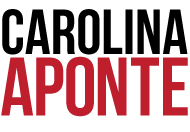Carolina Aponte
« Comme on a envie de prolonger, un rayon… Ce que tu viens de jouer, c’est extraordinaire de densité. On a envie que ça dure, que justement ce qu’il y a de plus riche dans la rencontre ne soit plus exprimé par des mots mais par une espèce d’émotion que tu provoques par la façon dont tu joues et que l’on ressent, il semble, en direct. Et j’admire que le piano puisse être ce chemin qui nous mène de l’un a l’autre. »
These words were expressed by the late Albert Jacquard, (23 December 1925 – 11 September 2013) who was a French geneticist, populariser of science, essayist and humanist well known for defending ideas related to science, the environment and persons in need. He stated these words while listening to his grand-daughter play the piano at the beginning of a documentary called Jamais sans les Autres (Never without Others), which takes us on a journey of his life and teachings as well as an expression of how every single meeting one has with another is crucial to the people we become throughout our lives.
I have chosen his words to begin my statement because they speak very truly to the essentialness of our identity and humanity within every given moment of our existence on this planet. He was able to convey through simple words the emotional power in which the language of art and music has in connecting one human being to another. The utter beauty of this direct sharing of emotions and experiences has now become the motor of my art practice. In essence, it has evolved into the action and ritual of gift giving and receiving as being the actual art form itself.
This kind of progress in my art practice began in the winter of 2013, a little over a year following the Quebec student protests also called the Maple Spring. In May of 2012 Montreal’s City Council adopted amendments to a bylaw that made it illegal to wear a mask during a public demonstration and required demonstrators to provide prior notification to police of their meeting place and route. This of course gave much concern to a number of Montreal citizens which expressed their apprehension of the bylaw – in particular that these provisions placed unnecessary and unconstitutional restrictions on freedom of expression and peaceful assembly, both of which are protected under the Canadian and Quebec Charters.
In a series of demonstrations in Montreal during the winter and spring of 2013, the Service de police de la Ville de Montreal (SPVM) had used this bylaw to “kettle” demonstrators when they failed to provide the police with a route for their demonstration. In three instances in March of 2013, police put an end to demonstrations before they even began and issued hundreds of tickets under the bylaw P-6 for over $600 each.
For me, this was not only a restriction on our freedom of expression and peaceful assembly but also a symbolic problematic of power and domination over the other. As my frustration grew with every mass arrest, I began thinking of how I could make a symbolic gesture through art which would denounce this sort of injustice. My mind kept on going back to the red square which was the symbol of the Quebec student protests of 2012 and I decided to start from there. I also thought that this artwork should take form as a performative gesture being presented as a gift to those being robbed of their civil right to protest as well as a friendly reminder to the SPVM of their duty to treat all citizens equally. The use of the red square, text and Origami is what I decided to develop for the performance held in front of the Montreal City Hall on April 22ndaimed to abolish the present bylaw. I created a collaborative with two other artists called Origamilitantisme.
As soon as we released the 637 red Origami Pelicans between the Police and the protesters at the Montreal City Hall, we sensed a calmer atmosphere for quite a while. Protesters were picking up the Pelicans scattered on the ground, opened them and read the messages inside. Following various installations and performances I continued to dwell on the idea of the importance of ritual, collaboration with others and the sharing of knowledge and various experiences with others as well as democratizing the public space. I understood that the moment in which we are capable of recognizing that we are compiled of various experiences through the meeting of others and that without the other in many ways our existence and self cannot truly subsist. When we are capable of including the “we” within our own identities instead of focusing primarily on the “I” a shift of perception occurs thus allowing us to become more than just separate individuals but part of a larger collective which becomes more determined on the good for all.
I truly believe that art is one of these forms of language which can translate this need to enter into a genuine communion with the other on various levels. I would like to concentrate my art practice on these specific social and relational themes and have the opportunity to share and learn various ways of discovering the other and consequently myself as well through art.
